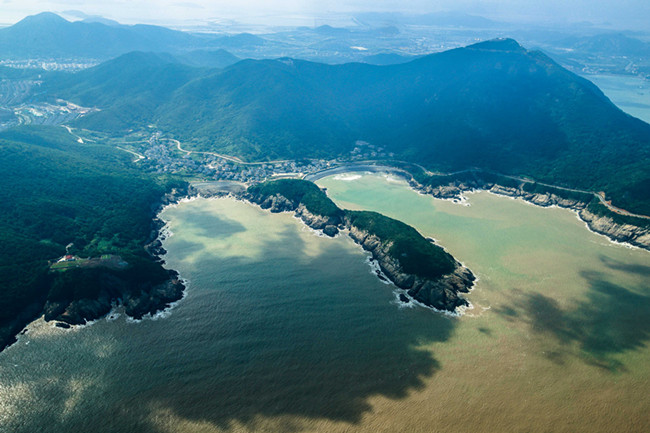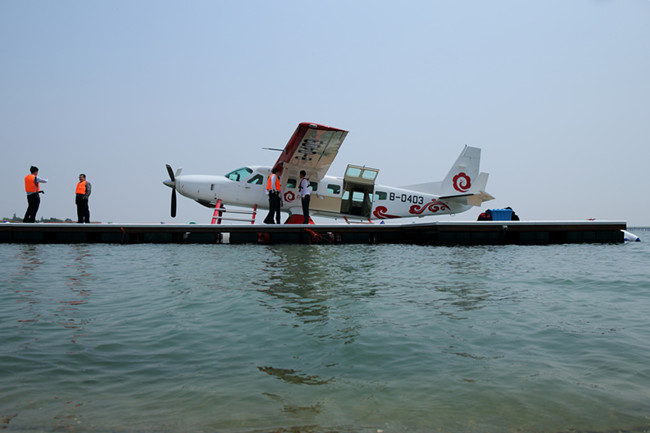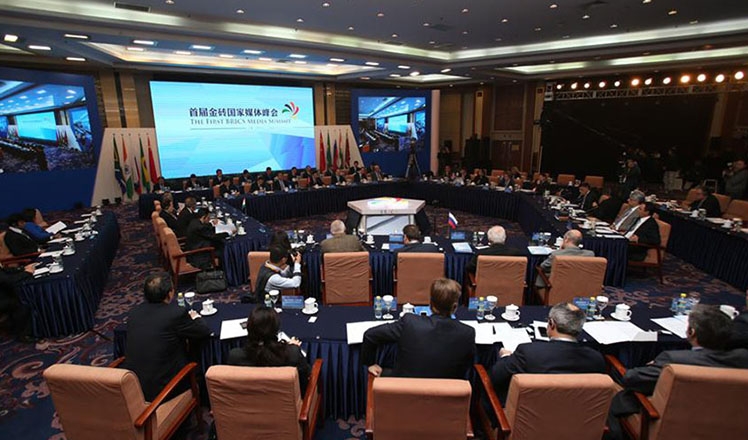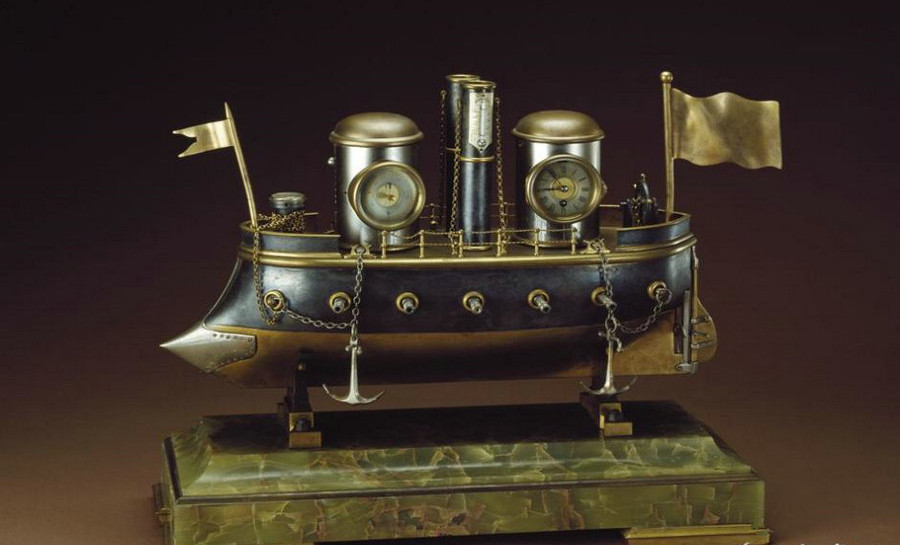Taking the water way to fly
Updated: 2015-12-03 16:33
By Yang Feiyue(China Daily USA)
|
||||||||
 |
|
A Bird's eye view from a floatplane in Zhoushan city in Zhejiang province. [Photo provided to China Daily] |
I couldn't help but let out a scream when the plane took a nosedive.
Before I got my breath back, it pulled up abruptly again, and I could feel my heart pounding.
A middle-aged man sitting beside me subconsciously reached out and grabbed my arm, and I saw fear in his eyes too.
"Do you guys want a second round?" asks the co-pilot, who turns his head towards us and is smiling as the plane is back on an even keel.
Both of us turn down his offer as gracefully as we can.
The flying stunt and the whole gravity-losing experience is part of a floatplane sightseeing package offered in Zhoushan city in Zhejiang province.
For now, floatplanes are used mainly for tourism in China.
In addition to Zhoushan, there are floatplane services in Sanya, in Hainan province, the Inner Mongolia autonomous region and Zhuhai in Guangdong province.
But the number of floatplanes is small.
A total of five floatplane sightseeing routes have been developed in Zhoushan, and they offer tourists a bird's eye view of local islands Putuo, Taohua and Dongji.
The floatplane maintains an altitude of 600 meters and this enables passengers to fully take in the scenery below featuring the yellow and blue seawater (the moving demarcation line in the water is magical). The dark-green islands resemble marine beasts.
The two floats on the fuselage allow the plane to land and take off on water, and seeing water violently splashing away when the plane touches the surface is a treat.
 |
|
A floatplane is about to take off from Jinshan City Beach. [Photo provided to China Daily] |
Liu Shengjun, CEO of Joy General Aviation Ltd, the floatplane operator in Zhoushan, says: "We've had many tourists take our floatplanes during the tourism peak season."
Liu's company, which started commercial floatplane operations in May this year, offers four flights a day, five days every week during the peak tourism season (May-October). Typically, 70 percent of seats are occupied on the nine-seat floatplanes. The flights cost around 1,000 yuan ($156) an hour.
Although more tourists take the flights at the moment, Liu says they hope to attract more regular commuters in the future.
His company now offers regular flights from Zhoushan to Zhejiang's northernmost Shengsi county.
"It takes 2.5 to 4 hours from Zhoushan to the county by boat, while the floatplane cuts the travel time down to 30-40 minutes," says Liu.
Liu's company has this year ordered 20 floatplanes from US-based Textron Aviation, which sells brands such as Beechcraft, Cessna and Hawker.
By next April, it will have 22 floatplanes up and running. The company plans to purchase 40 floatplanes in 2017, and the goal is to have 100-150 floatplanes in five years, says Liu.
Liu says that as of now floatplane route planners are focusing on prosperous regions and scenic spots, though some routes to remote rural areas could be developed to answer the government's call for connectivity.
Routes connecting Shanghai's Jinshan district and Zhoushan, downtown Hangzhou and Qiandao Lake, as well areas in Fujian, Guangdong and Yunnan provinces have been planned and are scheduled to be operational next year.
For example, there is only one flight and no high-speed rail connectivity between Shanghai and Zhoushan, which is not very flexible and economical, since the two places are not far away from each other, so a floatplane link could work there, he says.
Liu says his ultimate goal is to build floatplane connectivity throughout China's 3,000-kilometer coastline and even connect some mainland areas to South Korea, such as Shandong's Weihai and Yantai.
Currently, China has strict air space supervision and there are many procedures to be completed before launching a floatplane flight route. But the country has plans of opening low-altitude space, heralding a rosy picture for the industry.
Cao Wenyuan, a manager with the Joy General Aviation, says floatplanes can be used for tourism sightseeing, sea patrols, commuting and rescue operations.
"They are safe and need simple landing and takeoff conditions," says Cao.
Floatplanes also have many safety features, including two throttles, in case one breaks.
They also uses fewer resources, such as land, as compared with aircraft, and perform better when it comes to oil consumption and noise pollution.
At the moment, floatplanes are widely used in Vancouver in Canada, Alaska and Seattle in the US, and in the Maldives.
Floatplanes from Vancouver Coal Harbor Seaplane Base take visitors to Victoria Harbor, as well as Whistler, Nanaimo and Vancouver International Airport, enabling them to enjoy a magnificent landscape from above.
The floatplane has even been nicknamed the floating cab in Alaska.
Cao says that, Zhoushan, for example, has roughly 1,000 islands, so if aviation routes are approved in the future, it would be very convenient for people to shuttle back and forth between the islands.
Meanwhile, the potential of the Chinese market has attracted the attention of the international general aviation giants like Textron Aviation, which established a manufacturing business in Shijiazhuang, Hebei province, in 2012.
William Schultz, head of the company's business operations in China, says: "China is a very large country, with many cities and locations that are not always serviced well by airlines or the railway system, so that's where general aviation really works well, especially the floatplane."
He adds that China and the United States, for example, have approximately the same geographical size, and both countries have a very long coastal line and plenty of lakes and rivers, which represents great opportunities for floatplanes or general aviation development.
He says that floatplanes besides being used for passengers can also be used for special missions such as aerial mapping, emergency medical services and fighting forest fires.
In Alaska alone, there are more than 100 floatplane points, and the whole of the US has more than 500 floatplane airports, some even able to house 1,000 floatplanes.
Schultz says that he now has to drive four hours to get from Shanghai to Zhoushan.
"The distance is not long but you have to go all the way around."
The floatplane greatly shortens travel time, and that's why the business is growing rapidly, he says.
His company has seen substantial annual growth over the past three years, and floatplanes now account for 30 percent of Textron's business in China.
While floatplanes may seem different, passengers need to go through the same security checks for the floatplane as they do for airplanes and everyone is required to wear a life jacket throughout the flight. Smoking is also not allowed.
So will floatplanes become as common as conventional aircraft?.
Despite my bout of nerves and my fearful neighbor, the others on the flight were very happy that they could sit close to the pilots and watch them fly.
One woman requested me take pictures of her with one of the two pilots when we got off the plane, and the young pilot wearing sunglasses obliged.
"The whole flight was cool and it was my first time interacting with a pilot," she says.
(China Daily USA 12/03/2015 page10)

 Gunmen go on a killing spree in Southern California
Gunmen go on a killing spree in Southern California
 Chinese, South African presidents hold talks to cement partnership
Chinese, South African presidents hold talks to cement partnership
 China, Zimbabwe agree to boost cooperation
China, Zimbabwe agree to boost cooperation
 First lady visits Africa's 'new window' on China
First lady visits Africa's 'new window' on China
 BRICS media leaders to secure louder global voice
BRICS media leaders to secure louder global voice
 Western science in the eyes of Chinese emperors
Western science in the eyes of Chinese emperors
 Top 10 smartphone vendors with highest shipments in Q3 2015
Top 10 smartphone vendors with highest shipments in Q3 2015
 A deepening friendship
A deepening friendship
Most Viewed
Editor's Picks

|

|

|

|

|

|
Today's Top News
Shooting rampage at US social services agency leaves 14 dead
Chinese bargain hunters are changing the retail game
Chinese president arrives in Turkey for G20 summit
Islamic State claims responsibility for Paris attacks
Obama, Netanyahu at White House seek to mend US-Israel ties
China, not Canada, is top US trade partner
Tu first Chinese to win Nobel Prize in Medicine
Huntsman says Sino-US relationship needs common goals
US Weekly

|

|








